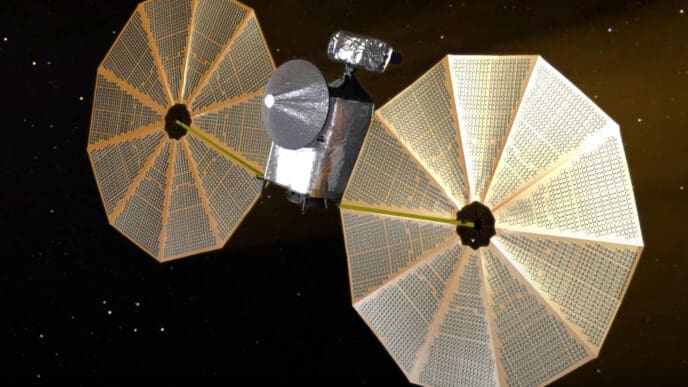In 2024, developments in particle physics have illuminated the perplexing nature of matter and the universe. From antimatter’s volatility to dark matter’s elusive properties, researchers have ventured deeper into these enigmatic aspects of our universe.
Antimatter, known for its explosive interaction with normal matter, has long been a subject of scientific intrigue. In a groundbreaking effort this year, scientists at CERN devised a method to transport antimatter without annihilation, using electromagnetic fields in a vacuum. This advancement allows researchers to investigate antimatter’s unique properties further.
The creation of heavier antimatter particles marked another milestone. At facilities like the Relativistic Heavy Ion Collider and the Large Hadron Collider, researchers produced antihyperhydrogen-4 and antihyperhelium-4, challenging our understanding of matter-antimatter symmetry. These discoveries raise questions about the universe’s predominance of regular matter despite antimatter’s equal production in lab conditions.
The connection between dark matter and antimatter emerged as a potential breakthrough, with cosmic rays revealing unexpected levels of antimatter. The Alpha Magnetic Spectrometer aboard the International Space Station detected these anomalies, suggesting dark matter interactions as a possible source. However, this theory requires further exploration to confirm.
Galaxy cluster collisions have provided insights into the behavior of dark matter. When clusters collide, dark matter’s position relative to visible components can be inferred through gravitational lensing. This year, the collision of MACS J0018.5+1626 allowed astronomers to observe dark matter decoupling from hot gas, posing new questions about particle interaction strength.
In pursuit of dark matter’s nature, the hypothesized axion particle emerged as a contender to WIMPs. The theoretical axion, produced in supernovae, could provide answers but requires precise conditions for detection. Meanwhile, the ‘Dark Big Bang’ theory proposes an alternative timeline for dark matter’s creation, linked to gravitational waves detected by pulsar-timing arrays.
Neutron lifetime discrepancies have puzzled physicists for years, with 2024 bringing a new explanation. Austrian scientists posited that variations in neutron energy levels account for inconsistent decay measurements. This insight represents progress in unraveling atomic mysteries.
The observation of radioactive decay in real time was achieved for the first time. Physicists harnessed optical tweezers and lead-212 nuclei to capture the exact moment of alpha particle emission, presenting a novel approach to study decay and potentially more elusive particles in the future.
The mass of the W boson, essential to the weak force, was reaffirmed within predicted ranges, quelling hopes for new physics beyond the Standard Model. Still, this precision aids in evaluating the Higgs field’s influence on particle mass.
The scientific community bid farewell to Peter Higgs, whose work on the Higgs boson left an indelible mark on physics. His legacy endures as researchers continue to explore the universe’s fundamental forces.
The developments in 2024 highlight the relentless pursuit of understanding in particle physics. As researchers unravel these complex phenomena, they edge closer to comprehending the universe’s very fabric, pushing the boundaries of scientific knowledge.
Source: Space












